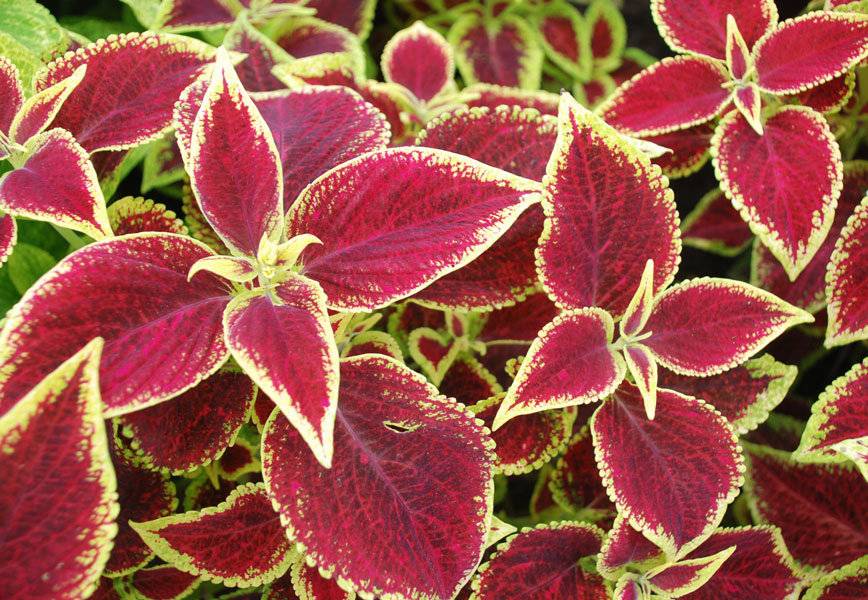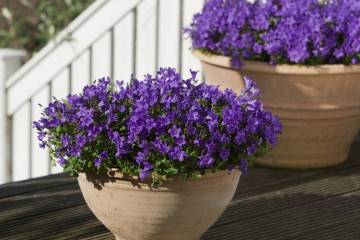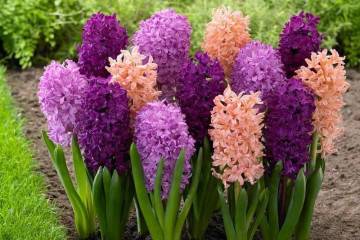Nettle or houseplant Coleus
Content:
Coleus is the perfect plant that combines the delightful beauty of its leaves and ease of care. Otherwise, it is called the flower nettle, for many years it has been popular due to its beauty.
Nettle or Coleus, houseplant
Often gardeners are interested in: which of the house plants looks like nettles? In everyday life, you can hear the name "home nettle" instead of "coleus". This is due to the fact that coleus leaves look like nettles. The shape of the leaf blade is similar in both plants. Coleus foliage of various colors, which cannot be said about nettles, it is only green. When touched, the plant does not sting or irritate the skin.
What does Nettle look like, which family does it belong to
The houseplant nettle belongs to the genus of evergreen Lamiaceae, and belongs to the family Labiata. The flower is a small bush with several stems. The height of a home plant does not exceed 100 centimeters. The stems are strong with a ribbed structure.
Flowers are small and of no interest to growers. Mostly blue or blue.
The main decoration of a flower is its foliage. It amazes the imagination with its shape and colors. The deciduous blade can be purple, yellow, red, burgundy. The descriptions of the plant say that often the foliage combines all two or even three colors. Each variety has its own unique pattern. These can be stripes, dots, blotches. The drawing can be either small (barely noticeable) or large (with a clear structure). The plate is serrated at the edge. The length of the leaf is from 5 to 15 centimeters. They can be oval or heart-shaped.
Briefly about the history of appearance
The first mention of the domestic nettle flower can be found in Indian mythology. It is India that is considered the birthplace of nettles. It was in the 19th century that the seeds hit European markets, then spread throughout the world. The first sale was recorded in England. It was then very expensive. The British were the first to grow a flower at home. In the wild, nettles can be found in the tropical forests of Asia and Africa.
Can I keep in the house
There are many myths, legends and signs around Coleus. Due to the varied color of the foliage, the plant is credited with mystical properties. Previously, it was believed that keeping a flower in the house would lead to misfortune and misfortune, and also harm health. If the plant withers and dries up, then this means that one of the family members will get sick.
But if you place a pot with nettles in the office, this will lead to the financial growth of the company. If the flower bloomed in winter, expect trouble. Some refer to him as a muzhegon. It is believed that if a girl has nettles at home, she will never marry and will be lonely until she gets rid of the flower.
All these signs and superstitions have no scientific evidence.It is natural for a person to attribute his troubles and troubles to other people, plants and even objects. If there is a desire to keep a flower in an apartment, then you should not pay attention to signs and superstitions.
Rules for caring for Coleus at home
Coleus home flower is unpretentious in care. All the plant needs is regular watering and feeding. The flower does not need pruning, it forms the crown itself.
In spring and summer, the bush needs abundant watering. It is worth avoiding stagnant water, this leads to disease and death of the plant. Watering is necessary as the top layer dries. In winter, the amount of incoming water is reduced.
This flower is not demanding on the composition of the soil, the main thing is that it allows water and air to pass through well. You can use a ready-made substrate or make it yourself. To do this, it is enough to mix turf or leafy soil in equal proportions, add humus or peat.
Reproduction is carried out by seed and vegetative method. The seed is sown in small containers, after sprouting, the seedlings are transplanted into separate containers. The plant is fed in spring and summer. Mineral complexes are introduced into the soil, as well as organic fertilizers (wood ash, humus, compost). The plant needs a transplant every two years.
The ideal temperature for growing is +25 degrees. A sharp drop in temperature is dangerous for a flower. At a temperature of +15 in summer, the growth of the flower stops. In winter, it is not recommended to place the plant near the battery. The plant does not tolerate dry air. With frequent spraying, it feels great indoors.
Place in the interior
The tropical plant prefers bright sunlight. The color of the leaves increases if the bush receives a lot of light. A window from the east, west and north sides is suitable for him. If the flowerpot is placed on the southern windowsill, then it is better to shade the nettles at noon. Direct ultraviolet rays can burn the leaf.
Thanks to its varied colors, the flower can beautify the house. Due to its dwarf size, indoor nettles will not clutter up the room, but, on the contrary, will emphasize its dignity.
Coleus interior decoration has undeniable advantages:
- an abundance of greenery, helps to relax after a hard day at work;
- air purification air;
- harmonious combination with the interior in any style.
Patterned leaves will liven up any interior. Red or burgundy will invigorate, purple - on the contrary, soothe. They look great in hanging pots and planters. The flower has no contraindications and is suitable for a children's room. The plant purifies the air and brings many health benefits.
Common varieties for growing at home
Coleus has about 150 varieties. Among the popular species that are often grown at home, the following can be distinguished:
- Coleus Vershaffelt (Сoleus vershaffeltii);
- Coleus Blumei.
Both species are great for indoor growing.
Coleus Blumei
Coleus Blume has a branched thin stem. Over time, the lower part of it can become numb. Castings grow in pairs, crosswise. Due to the small villi, velvety to the touch. Coleus Blume belongs to hybrid varieties.
Among artificially bred varieties, one can note:
- Wizard. Has different shades of foliage.
- Orange. The hardwood plastic has a lemon border with an orange center.
- Black dragon. It is distinguished by a brown-lilac leaf, which is dissected with scarlet veins.
- Lace salmon. Leaves with a reddish center and a wide green border.
- Scarlett Wizard. Leaves are red with a thin yellow border.
- Pineapple wizard. The foliage is bicolor, cherry-green.
Blume is a compact indoor plant that grows and develops rapidly.
Coleus Vershaffelt (Сoleus vershaffeltii)
Vershaffet's species has larger leaves and is brighter in color. This is one of the very first species that was introduced to Europe in the 19th century.
As a result of selection, hybrid varieties appeared:
- Dark Chocolate - dark, as the name suggests, chocolate coleus;
- Black Dragon - almost black;
- Palisandra - represented by burgundy foliage.
More recently, such varieties have been bred - Royal Scot, Walter Turner, Wisley Tapestry, Crimson Ruffles, Pineapple Beauty - vary not only in mosaic color, but also in the form of leaves - from the "oak" Wisley Flame to the sharply serrated Glory of Luxembourg.
Home stinging nettles can suffer from aphids, spider mites, scale insects, and whiteflies if not properly cared for.
Coleus, or home nettle, is a wonderful plant that can change any room beyond recognition. It is easy to care for him, even a novice florist can handle it.




















